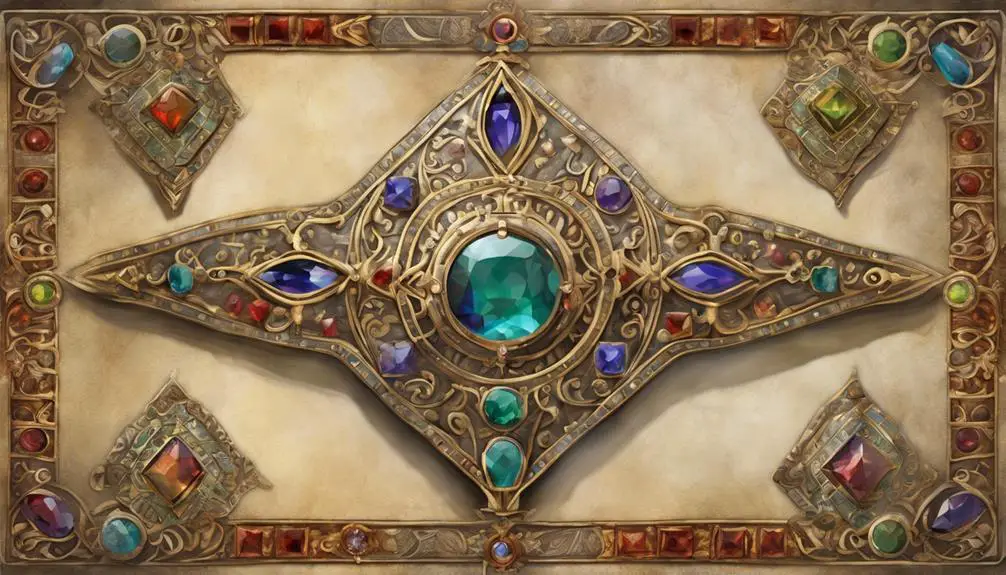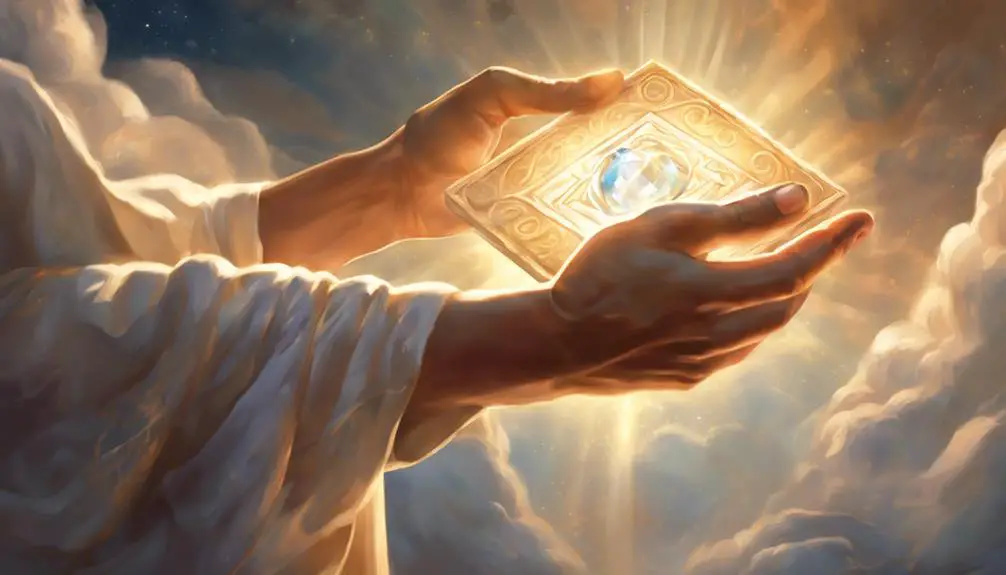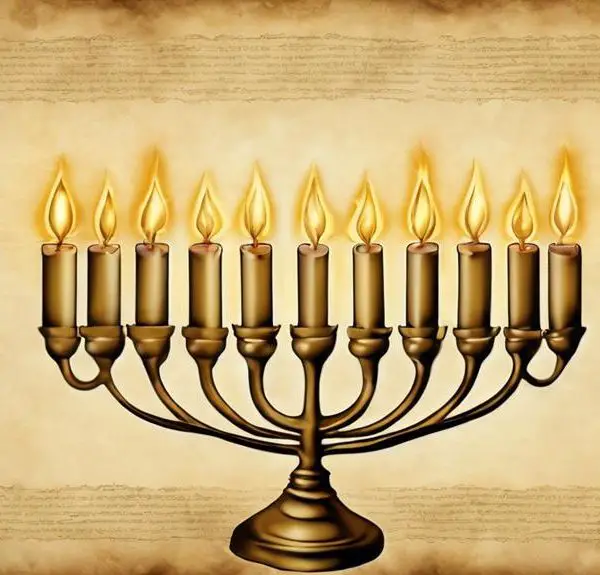Journey through the Bible to uncover the profound symbolism of diamonds, revealing their divine and unbreakable connection to faith and purity.

Significance of Diamonds in the Bible
Have you ever wondered why diamonds hold a special place in the Bible? As you explore the sacred texts, you'll find that these precious stones aren't just symbols of wealth or beauty. They carry profound meanings, from representing the purity and light of God's creation to signifying the unbreakable covenant between God and His people.
The inclusion of diamonds on the High Priest's breastplate alone opens up a fascinating discussion on their spiritual significance. There's a rich tapestry of symbolism and belief that surrounds diamonds in biblical context, inviting you to uncover how these gems have influenced Christian art and thought through the ages.
Key Takeaways
- Diamonds symbolize spiritual purity, eternal truths, and divine protection in biblical contexts.
- The presence of diamonds on the High Priest's breastplate signifies unity and divine guidance.
- They represent the unbreakable and eternal nature of God's covenant with His people.
- Influence of diamond symbolism in Christian art and thought highlights divine purity and the preciousness of spiritual enlightenment.
Diamonds in Sacred Scriptures

Delving into sacred scriptures reveals that diamonds have held a significant, though nuanced, role in various religious texts, embodying both material value and deeper symbolic meanings. When you explore gemstone origins within these ancient writings, particularly through biblical interpretations, it becomes clear that diamonds were more than merely decorative. They were emblematic of spiritual truths and divine favor.
The Bible, for instance, references diamonds in the context of the high priest's breastplate, which was adorned with twelve gemstones, each representing a tribe of Israel. This inclusion underscores the diamond's significance in conveying divine protection and wisdom. The gemstone's hardness, unrivaled by any other material in nature, symbolized an unbreakable covenant between the divine and the earthly realm.
Moreover, examining the biblical interpretations, you'll find that diamonds weren't just physical ornaments but carried metaphysical properties. They were believed to imbue the wearer with strength and clarity, empowering leaders to make just decisions. Thus, through a scholarly lens, diamonds in sacred scriptures emerge not merely as symbols of wealth but as profound conveyors of spiritual values and eternal truths.
Symbolism of Purity and Light

Beyond their physical allure, diamonds symbolize purity and light, reflecting not only the clarity of the stones themselves but also the spiritual illumination they're believed to bestow upon the wearer. This symbolism is deeply entrenched in biblical narratives, where diamond metaphors serve as powerful conveyors of moral and spiritual clarity. The inherent characteristics of diamonds—unbreakable, clear, and brilliantly reflective—mirror qualities aspirational for the human spirit.
The symbolism of purity and light in diamonds can be dissected as follows:
- Unbreakable Nature: Represents the enduring, unyielding faith that's expected of believers, suggesting that true faith can withstand any challenge.
- Clarity: Symbolizes spiritual clarity and the transparency of one's soul before the Divine, emphasizing the importance of purity of heart and intention.
- Brilliant Reflectiveness: Echoes the idea that believers are to reflect the light of the Divine, illuminating the path for others in moral and spiritual darkness.
- Rarity and Value: Reminds us of the preciousness of spiritual enlightenment and the pursuit of righteousness in a world often clouded by vice.
In essence, diamond metaphors in biblical texts serve not only as reminders of the spiritual virtues to which individuals should aspire but also as symbols of the divine light and purity achievable through faith and righteous living.
Diamonds on the High Priest's Breastplate

Reflecting on the symbolic purity and light of diamonds, we find their significance magnified in their role on the High Priest's breastplate, a vital element in biblical tradition. This ornate vestment, rich in craftsmanship details, was not merely an article of clothing but a sacred emblem of divine communication and guidance. Each stone on the breastplate, including diamonds, was meticulously chosen for its spiritual resonance and tribal representation, symbolizing the unity and diversity of the twelve tribes of Israel.
Emotion Evoked |
Detail |
|---|---|
Awe |
Craftsmanship details |
Unity |
Tribal representation |
Reverence |
Symbolic purity |
Illumination |
Light of diamonds |
These gems, especially diamonds, served as a constant reminder of the High Priest's solemn responsibility to serve as an intermediary between the divine and the Israelites. The craftsmanship details of the breastplate, including the precise setting of each diamond, underscored the meticulous care and reverence afforded to objects of worship. The tribal representation, signified by each stone, fostered a sense of belonging and unity among the tribes, reminding them of their shared heritage and divine protection.
Representing God's Unbreakable Covenant

Within the biblical narrative, diamonds symbolize the strength and permanence of God's covenant with His people, embodying an unbreakable bond that transcends time and human frailty. The metaphor of diamond durability serves as a profound illustration of the divine promises made to humanity, emphasizing both their value and their resilience.
The choice of diamonds as covenant metaphors in scripture is deliberate, drawing on their well-known properties to convey deep theological truths:
- Immutable Nature: Just as diamonds are the hardest natural substance, God's covenant is unalterable, resisting the erosion of time and human caprice.
- Brilliance and Clarity: Diamonds reflect light with unmatched brilliance, symbolizing the clarity and purity of God's intentions towards His people.
- Rare and Valuable: The rarity and value of diamonds mirror the precious nature of the divine promise, a gift not lightly given nor easily revoked.
- Eternal Bond: Lastly, the enduring quality of diamonds suggests the eternal nature of God's covenant, a pledge that stretches beyond the confines of earthly existence.
This analytical exploration reveals how the biblical use of diamond imagery enriches our understanding of God's unwavering commitment to His people, offering a multifaceted perspective on the depth and durability of the divine covenant.
Influence on Christian Art and Thought

The symbolic resonance of diamonds in biblical narratives has profoundly shaped Christian art and thought, illuminating the depths of divine commitment through visual and intellectual expression. You'll find that artistic inspiration drawn from these narratives has not only adorned the walls of sacred spaces but has also intertwined with theological debates, challenging believers to reflect on the immutable nature of God's promises.
Here's a visual representation of ideas:
Aspect |
Influence on Art |
Influence on Thought |
|---|---|---|
Symbolism |
Used in paintings to denote purity |
Sparked discussions on divine purity |
Artistic Inspiration |
Inspired countless artworks |
Led to the creation of symbolic interpretations in literature |
Theological Debates |
Art pieces often provoke debate |
Debates on interpretations of biblical symbolism |
These elements show that diamonds have been more than just ornamental; they've served as a catalyst for deeper understanding and appreciation of Christian doctrine. Through art and intellectual discourse, the enduring symbol of diamonds continues to challenge and inspire, bridging the gap between the divine and the earthly, between the ephemeral and the eternal.
Frequently Asked Questions
How Has the Valuation and Perception of Diamonds Changed From Biblical Times to the Modern Era?
You've seen how the valuation and perception of diamonds have evolved dramatically. Initially valued for their rarity and beauty, diamond formation was a mystery.
Now, modern technologies not only demystify their creation but also allow for synthetic production, altering their scarcity and, in turn, their value. This shift has redefined their significance, transitioning diamonds from a symbol of unattainable luxury to a more accessible, albeit still cherished, commodity.
What Are the Ethical Considerations Surrounding Diamond Mining and Trade in Light of Biblical Teachings?
You're exploring the ethical concerns tied to diamond mining and trade, focusing on modern ethics. It's crucial to weigh these issues against biblical teachings about stewardship and justice.
Diamond alternatives, like lab-grown gems, offer a solution aligning with ethical standards by reducing environmental impact and avoiding labor exploitation.
Your analysis should delve into how these modern practices can reflect principles found in biblical narratives, offering a thoughtful, ethical perspective on diamond consumption.
Are There Any Lost or Lesser-Known Biblical Texts That Reference Diamonds or Gemstones Not Typically Discussed in Mainstream Interpretations?
You're diving into a fascinating area exploring gemstone symbolism and Apocryphal references to diamonds not widely discussed. These lesser-known texts can shed new light on ancient perspectives, offering deeper insights into the cultural and spiritual significance of these gemstones.
While mainstream interpretations might overlook these references, they're crucial for a more comprehensive understanding of historical beliefs and values surrounding gemstones, enhancing your knowledge beyond conventional narratives.
How Do Other Major World Religions, Aside From Christianity, View the Significance of Diamonds in Their Spiritual Texts and Traditions?
In exploring how major world religions view diamonds, you'll find Hinduism imbues them with deep symbolism, often associated with protection and strength.
Meanwhile, Islamic references to diamonds are scarcer, but when they do appear, they're highly valued for their beauty and durability, reflecting attributes of permanence and invincibility.
This analysis reveals a rich tapestry of beliefs, where diamonds transcend mere adornment, embodying spiritual and metaphysical qualities across diverse traditions.
Can the Presence of Diamonds in the Bible Be Linked to Specific Geographical Locations Known for Diamond Mining During Ancient Times?
You're delving into whether the Bible's mention of diamonds can be linked to ancient diamond mining locations, seeking historical verification. This inquiry not only highlights the intricate relationship between religious texts and ancient economies but also offers a scholarly insight into how spiritual and economic worlds intertwined.
Conclusion
In essence, diamonds in biblical texts encapsulate a profound symbolism, intertwining purity, light, and the immutability of divine promises. Their presence on the High Priest's breastplate underscores their sacred significance, while their interpretation in Christian thought and art enriches our understanding of spiritual purity and covenantal steadfastness.
Analyzing these aspects reveals how diamonds serve not merely as ornamental but as profound emblems of eternal, unbreakable bonds between the divine and humanity, illuminating the depths of biblical teachings and Christian doctrine.



Sign up